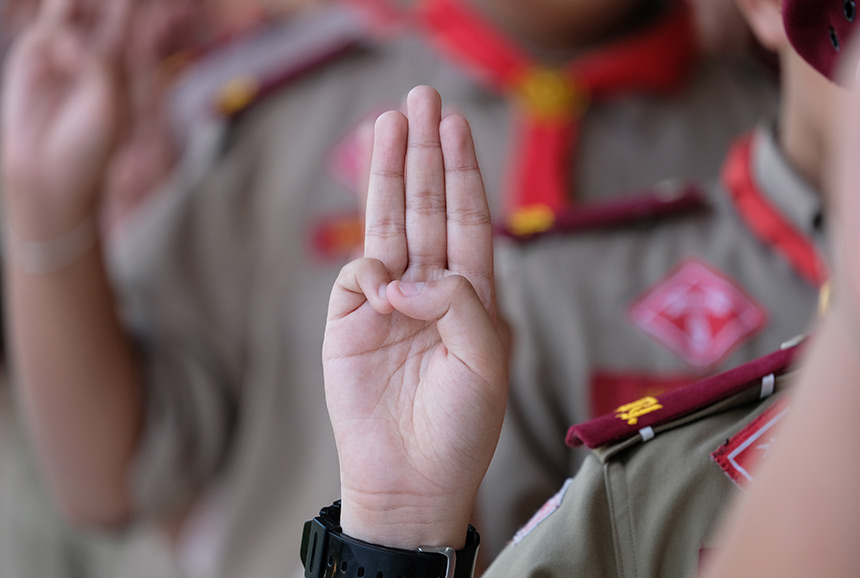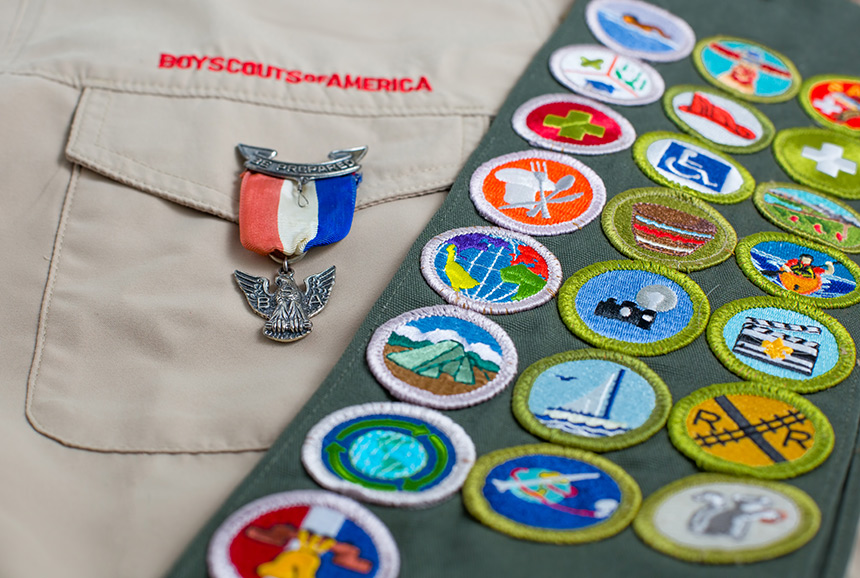For over 100 years, the scouting movement begun by England’s Robert Baden-Powell has continued to spread its messages of character and citizenship. 110 years ago this week, that movement made the jump to the U.S. with the incorporation of the Boy Scouts of America (also known today as Scouts BSA). Here are five things that you should know about the Scouts.
1. It Started by Accident

The story goes that Chicago newspaper and magazine publisher W.D. Boyce got lost on a trip to London. He was approached by a boy, known in scouting lore as “The Unknown Scout,” who helped him find his way. Boyce offered payment, but the boy declined, citing his Scout membership. Intrigued, Boyce tracked down the Scout headquarters in London and met with leadership. Upon his return to the States, he set about incorporating an American version of the organization. The original mission was “to teach [boys] patriotism, courage, self-reliance, and kindred values.” That has been modified over the years to today’s vision statement, which is “to prepare young people to make ethical and moral choices over their lifetimes by instilling in them the values of the Scout Oath and Law.” Now that girls may also participate, the group now officially goes by Scouts BSA.
2. It’s Legit on a Federal Level
Congressionally chartered corporations are a rare thing, applied to particular organizations for what’s basically a statement of legitimacy. Under Title 36 of the United States Code until 1992, an organization could be a congressional charter. This doesn’t mean that Congress manages a group; they just receive financial reports from the group. The BSA applied in part to prevent competing or copycat organizations from undercutting their mission. Other familiar congressional charters that you might know include the Girl Scouts of the USA, The 4H Club, the National FFA, the VFW, and the United States Olympic Committee.
3. There’s a Widening Variety of Programs
The entry program for the Boys Scouts is the Cub Scouts, which enrolls boys and girls aged 5 to 11. From there, they go to Scouts BSA from age 11 to 18, although kids may move up at 10 if they’ve finished fifth grade or earned the Arrow of Light, which is the highest Cub Scout rank. In addition to the that track, there are the senior programs called Venturing for young men and women aged 14 thru 21 and Sea Scouts (also 14 thru 21, but with a focus on nautical skills). An emphasis on citizenship and outdoor skills runs through all of the programs. There’s also Exploring, a co-ed program for 10 to 20-year-olds with activities and mentoring opportunities to help prepare kids for their futures in a variety of career fields.
4. Fly Like an Eagle

Eagle Scout remains the highest rank and achievement for members. To qualify, the candidate needs to have earned at least 21 merit badges while demonstrating a variety of service, spirt, and leadership qualities. What’s typically considered the capstone for earning the rank is a service project that the scout is expected to design, lead, and execute. More than 2 million scouts have achieved the rank, including notable Americans like President Gerald Ford, director Steven Spielberg, astronaut Neil Armstrong, governor/ambassador/Secretary of Commerce Gary Locke, and, on the more unsavory side, the currently incarcerated creator of the darknet’s Silk Road black market site, Ross “Dread Pirate Roberts” Ulbricht.
The Scouts BSA site, boyslife.org, maintains the Eagle Project Showcase. The service projects run the gamut from cemetery restoration to building memorials fountains and all variety of contributions to the community. A Wall Street Journal report from 2012 estimates that Eagle Scouts and their projects account for around three million hours of community service a year.
5. The Post and The Scouts Have Rockwell in Common
Norman Rockwell became a staff artist for the BSA publication, Boys’ Life, in his teens, doing covers and illustrations that accompanied stories inside the magazine. By 19, he was made the art director, a position he held for the next three years. Scout at Ship’s Wheel from September 1913 was his first magazine cover. Rockwell left Boys’ Life in 1916 as he began to work for the Post, where he occasionally incorporated scouting themes into his art. In 1926, Rockwell started creating illustrations for the annual Boy Scouts of America calendar; he would do 51 in all. In 64 years of creating art for the Scouts, Rockwell produced 471 separate images. The calendar works are on exhibit today at the Norman Rockwell Art Gallery in the National Scouting Museum in New Mexico.
Featured image: Joseph Sohm / Shutterstock
Become a Saturday Evening Post member and enjoy unlimited access. Subscribe now



